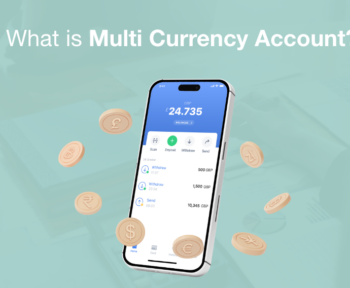The evolution of payment methods is progressing rapidly. The introduction of cards, which simplify transactions, represents a significant advancement. Virtual cards offer enhanced security measures, increased protection against fraud and greater flexibility in managing expenses. This article highlights the advantages of cards including their facilitation of digital transactions and subscription management as well as their reinforcement of security protocols.
How are Virtual Cards Used?
Virtual cards refer to a version of a credit card that provides a temporary card number linked to your primary credit card account for each transaction. Primarily used for online shopping and digital transactions, virtual cards feature a 16-digit number, security code and expiration date from your actual card details. This attribute ensures a payment experience.
- Enhanced security features
An outstanding aspect of cards is their emphasis on safety. Due to their detachment, from your real card information or account details virtual cards significantly reduce the risk of fraud occurrences. In cases where a virtual card number is compromised or stolen, it can be easily cancelled without impacting your account or authentic card details.
Having a layer of security is beneficial, in the modern era where internet fraud is on the rise.
It’s more convenient to deactivate and request cards compared to physical ones. If you suspect use of your card you can swiftly generate a virtual card number through your card issuers website or app. This practice helps safeguard your transactions.
- Preventing fraud
Virtual cards offer a level of protection against fraud. The likelihood of activities decreases as each virtual card number is typically assigned to a purchase or merchant. While hackers may access a virtual card number its usability is usually limited to transactions and businesses. Individuals concerned about security can find peace of mind with this feature.
- Payment versatility
Virtual cards provide payment options. They are particularly advantageous for shopping as they enable payments without divulging actual card details. Many virtual cards also allow users to set spending limits or expiry dates making them ideal for managing subscriptions and recurring payments. With this flexibility you can monitor your expenses closely. Prevent charges.
- Managing expenses effectively
Utilizing cards can streamline the process of tracking expenses for businesses. By providing employees with cards that come with spending limits and usage restrictions companies can better monitor and control costs reducing the risk of overspending or unauthorized transactions. What’s more, virtual cards simplify expense reporting by logging and categorizing transactions.
- Streamlining transactions and subscriptions
Virtual cards are ideal for purchases making them a practical solution for managing digital subscriptions. They offer a way to handle recurring payments as they can be easily cancelled and replaced. If a virtual card linked to a subscription service becomes inactive or is no longer needed it can be removed without affecting the card.
- Convenient payment options through devices
While primarily used for shopping virtual cards also enable touchless payments using mobile phones. Connecting cards to wallets like Apple Pay or Google Pay allows customers to enjoy the convenience of contactless payments in stores. This integration combines the security of cards, with the ease of technology simplifying the payment process.
Here are some drawbacks of cards.
The Drawbacks of Virtual Cards
While virtual cards offer advantages they also come with their share of issues. One significant drawback is their limitation when it comes to, in person transactions. Virtual cards are primarily designed for use making them less ideal for shopping in stores that require traditional credit or debit cards. Additionally managing recurring payments can be challenging if the virtual card number expires before the payment cycle.
Another aspect to consider is the availability of cards. If your card provider does not offer virtual card options you may have choices. Moreover, using cards often necessitates familiarity with tools and applications which may not be preferred by individuals who prefer cash transactions.
Virtual Cards are the Payment Method of the Future
Deciding whether virtual cards suit your needs depends on your shopping habits and preferences. Virtual cards can be a choice for online shoppers who prioritize security. They offer enhanced protection against activities. Simplify online payment management. Conversely if you predominantly shop at brick and mortar stores, conventional credit or debit cards or exploring wallets that contactless payments might be more suitable options.
Virtual cards represent an advancement,
in payment technology as they provide security, safeguard against fraudulent activities and offer increased flexibility in conducting online transactions. They prove to be particularly beneficial for individuals who frequently make purchases and for businesses seeking expense management. While virtual cards may not be suitable for every situation they certainly serve a purpose, in today’s landscape.
Understanding the advantages and disadvantages of cards can assist you in determining whether they align with your requirements. As digital transactions continue to rise the popularity of cards is expected to grow. They. Secure payment processes.


